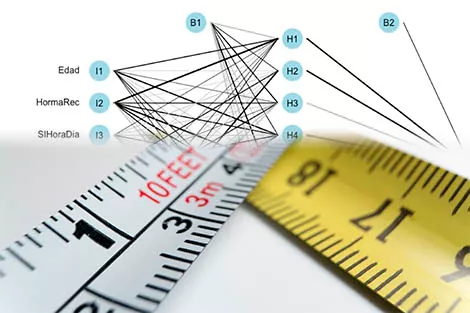SUCCESS WALL

SMART SIZING
Smart fitting tool for footwear size recommendation
Manufacturing Industries, Creative Industries ::
:: ICT development, Smart Data Analysis and Exploitation
The reason for most of the Made-to-Order (MTO) footwear rejection and return, is the wrong choice of size by the buyer.
The shoe size number is a convention, established on a very simple rule: each size number corresponds to a predefined foot useful length, considering the existence of regional variations in this calculation.
For example, in continental Europe the «French point» is used: the number of the shoe corresponds to the length of the foot (in millimeters) plus 5% of space (tolerance) and divided all by 6,666. But the equivalence of this measure with respect to the number assigned to the shoe is where the real problem lies, since the manufacturer manufacture shoes based on lasts, and the lasts (which create the interior space of the shoe) do not correspond with the foot.
To solve this problem, we have developed a sizing algorithm, transparently integrable in an e-commerce site, to recommend to a footwear buyer the size of the model that best adjusts to the dimensions of his feet. To do this we worked on the hypothesis of having heterogeneous data acquisition systems, since the business model imposed different profiles of seller-buyer relationship. For this reason, we have integrated into the sizing algorithm the possibility to work with measurements obtained from different methods and devices: two different models of fixed 3D foot scanner (one fully automatic, and another requiring intervention Of the user / operator in the data collection), a scanner based on Smartphone, and simply measure of foot length with a rule.
The sizing algorithm has been designed to use not only user’s foot measures, but also other complementary objective and subjective data, considering the type of foot (constitution with greater or lesser fat index, disposition and measurement of the plantar arch , Distribution and type of fingers, relative height of the calcaneus, perimeter of ball, etc.), the type of footwear, the materials and the influence not only of the objective aspects, but also of the subjective ones involved in the perceived sensation of comfort.
Finally, the algorithm has been practically implemented in a ICT smart fitting tool, a size recommendation module integrable as a stand-alone option in any online sales ICT solution.





